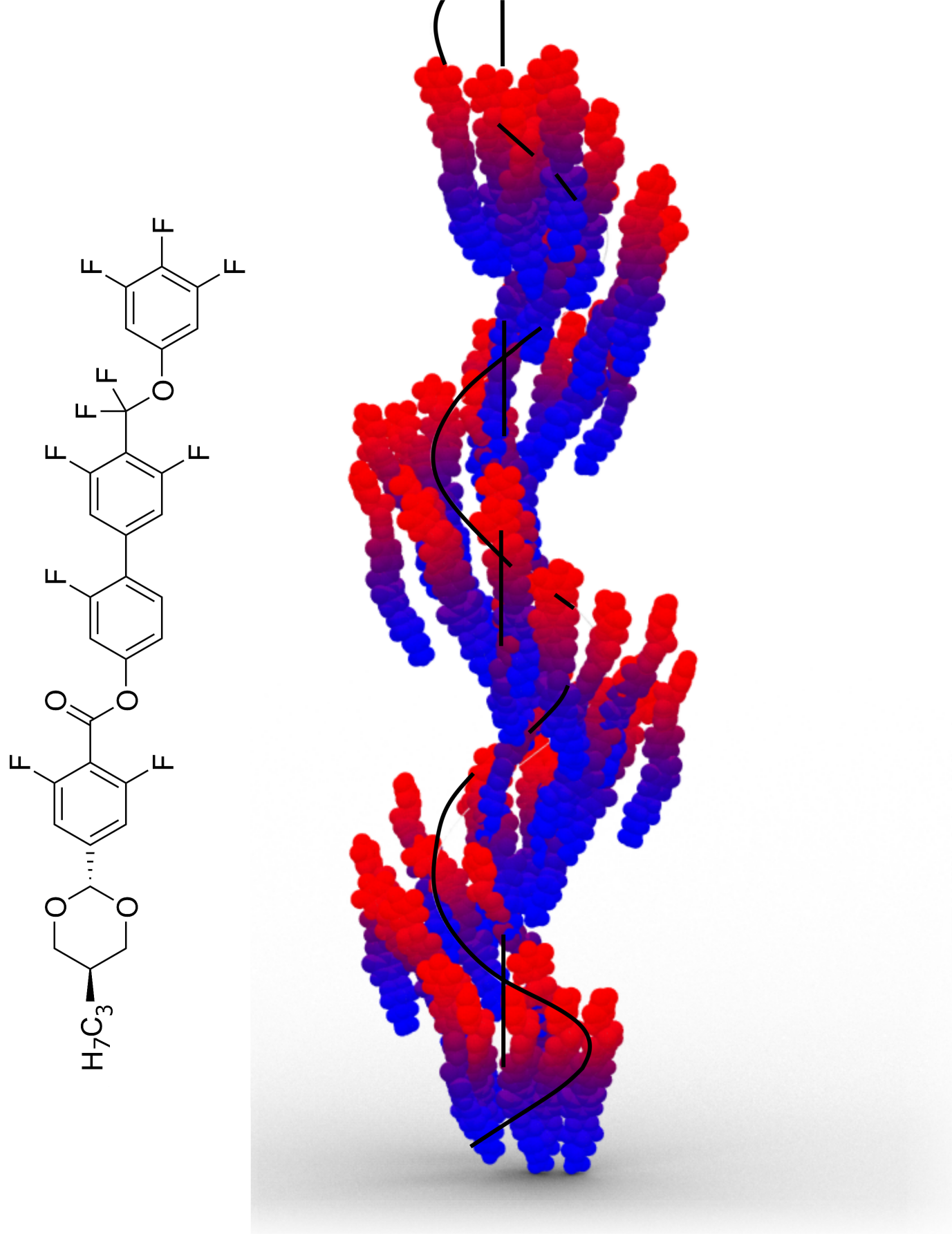 The chemical formula of the studied liquid crystal compound and the scheme of the structure of the discovered twist-bend ferroelectric nematic phase (NTBF). Credit: D. Pociecha/UW
The findings of recent research into a new nematic phase of liquid crystals, discovered by scientists from the Military University of Technology (WAT) and the University of Warsaw, were just published by “Science”. The research was conducted within the framework of an NCN-funded project and is expected to find many important applications.
The chemical formula of the studied liquid crystal compound and the scheme of the structure of the discovered twist-bend ferroelectric nematic phase (NTBF). Credit: D. Pociecha/UW
The findings of recent research into a new nematic phase of liquid crystals, discovered by scientists from the Military University of Technology (WAT) and the University of Warsaw, were just published by “Science”. The research was conducted within the framework of an NCN-funded project and is expected to find many important applications.
A team of scientists from the Military University of Technology (WAT) and the University of Warsaw discovered a new heliconial arrangement of electric dipoles in ferroelectric fluid. The discovery may find applications in, e.g. fluid physics, liquid crystal materials, organic electronics, photonics and molecular biology.
The article, entitled “Spontaneous chiral symmetry breaking in polar fluid – heliconical ferroelectric nematic phase”, was published in “Science” on 7 June and was hailed as one of the most promising in this issue of the journal.
It was authored by Jakub Karcz, Jakub Herman, Natan Rychłowicz and Przemysław Kula from the Faculty of New Technologies and Chemistry of the Military University of Technology in Warsaw, and Ewa Górecka, Jadwiga Szydłowska, Paweł W. Majewski and Damian Pociecha from the Faculty of Chemistry of the University of Warsaw.
The research behind the paper was funded by the NCN and the WAT. The article was written within the framework of a grant headed by Damian Pociecha, funded under the OPUS scheme.
The project focuses on, inter alia, research into new materials for new liquid crystal phases with polar (ferroelectric) order and non-trivial spatial (e.g. chiral) organisation of the molecules. We have discovered a new heliconical ferroelectric nematic phase and described it in the “Science” magazine. NCN funding was used for the purchase of new equipment and major upgrade of the old one, as well as the purchase laboratory materials crucial to our research,” says the scientist.
“Science” article: “Spontaneous chiral symmetry breaking in polar fluid-heliconical ferroelectric nematic phase”
Article about the discovery published by “Nauka w Polsce” PAP: “Spontaniczne helisy i uporządkowane dipole”
A popular science outline of Damian Pociecha’s project, “Polar order built into soft-matter phases with 3D structure”
